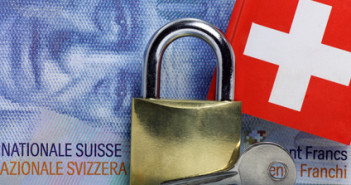Switzerland reported a disappointing GDP report for Q2: the economy squeezed by 0.1% instead of growing by 0.2% as expected. In addition, growth in Q1 was revised to the downside: 0.5% instead of 0.7% originally reported, making the Q2 figure even smaller.
On this background, the Swiss National Bank will likely keep the floor under EUR/CHF for a long time.
Around one year ago, the SNB shocked the markets by setting a floor of 1.20 under EUR/CHF. The cross was trading at much lower levels, so the move caused an immediate leap. The statement, vowing to buy “unlimited amounts” of foreign currency to defend the Swiss economy was very strong.
The influx of money to Switzerland in times of trouble strengthened the value of the franc in a way that hurt Swiss exports: they became noncompetitive. In addition, the low prices of imports caused deflation: one of the most dreaded phenomenons.
Contrary to many other interventions, this move worked out very well: one year later, the pair hasn’t fallen under 1.20, despite growing pressure. At first, EUR/CHF also traded in higher levels, but as the European debt crisis deteriorated, the floor became an effective peg, with EUR/CHF trading very close to 1.20.
Practically, also pairs involving the Swiss franc are a mirror of the euro’s movements: USD/CHF mirrors EUR/USD, GBP/CHF mirrors EUR/GBP, etc.
The big question is: in case of another downfall in Europe, will the SNB manage to hold the peg, or will the levee break?
